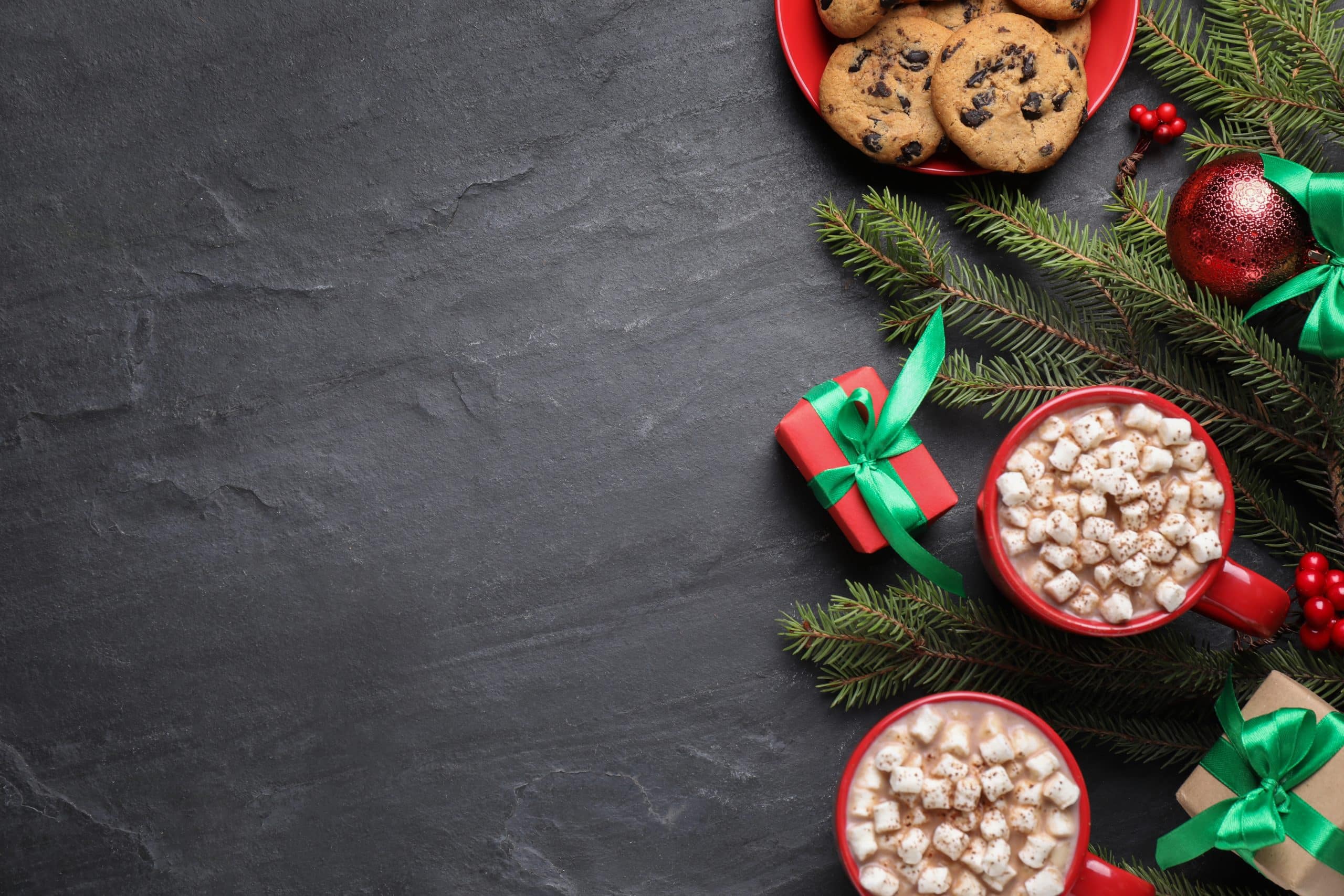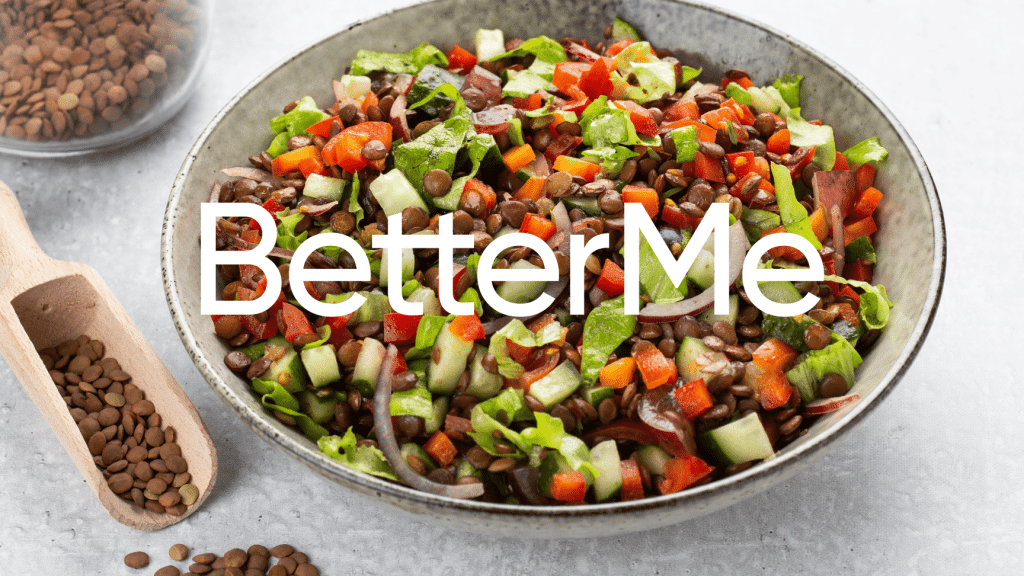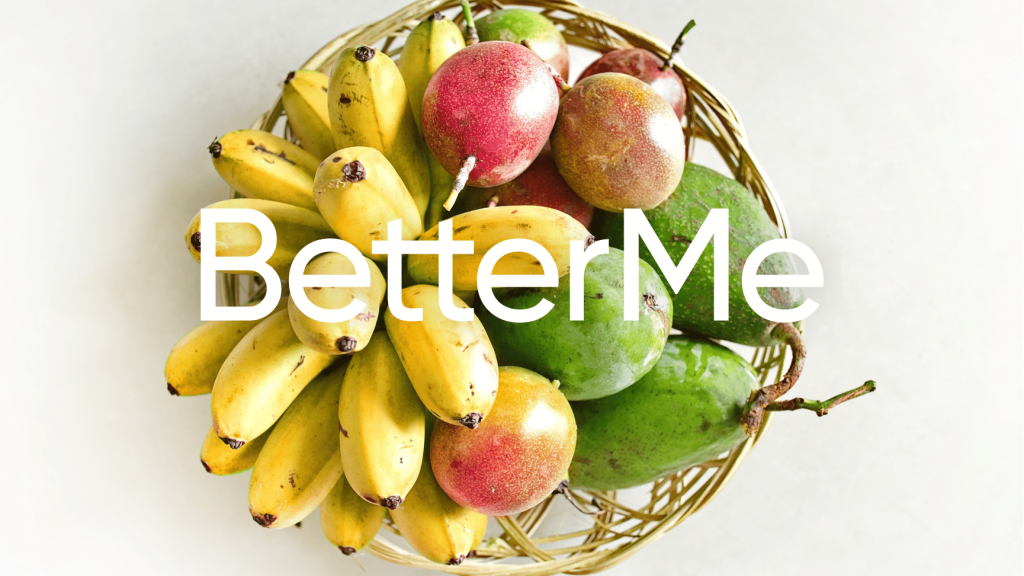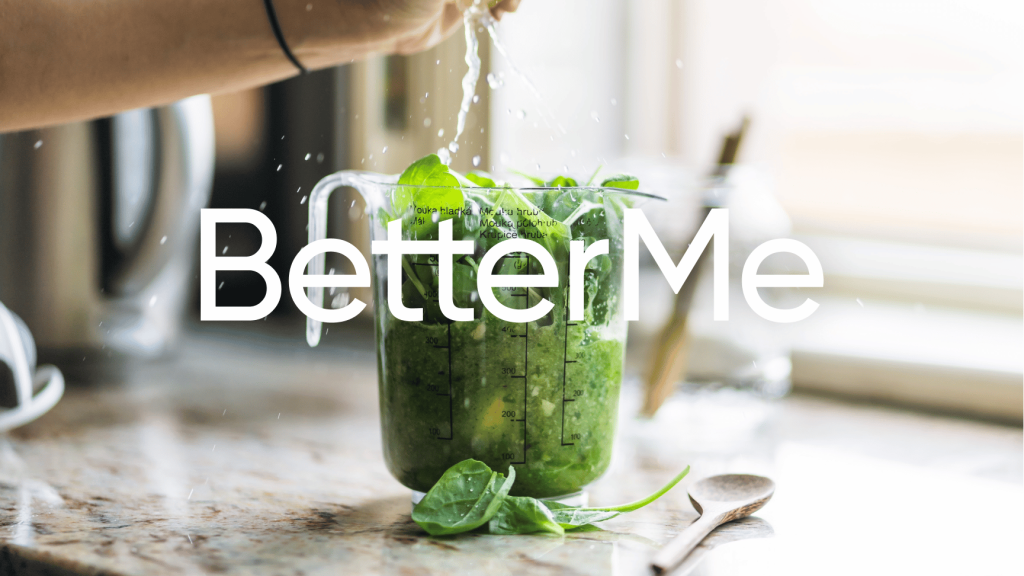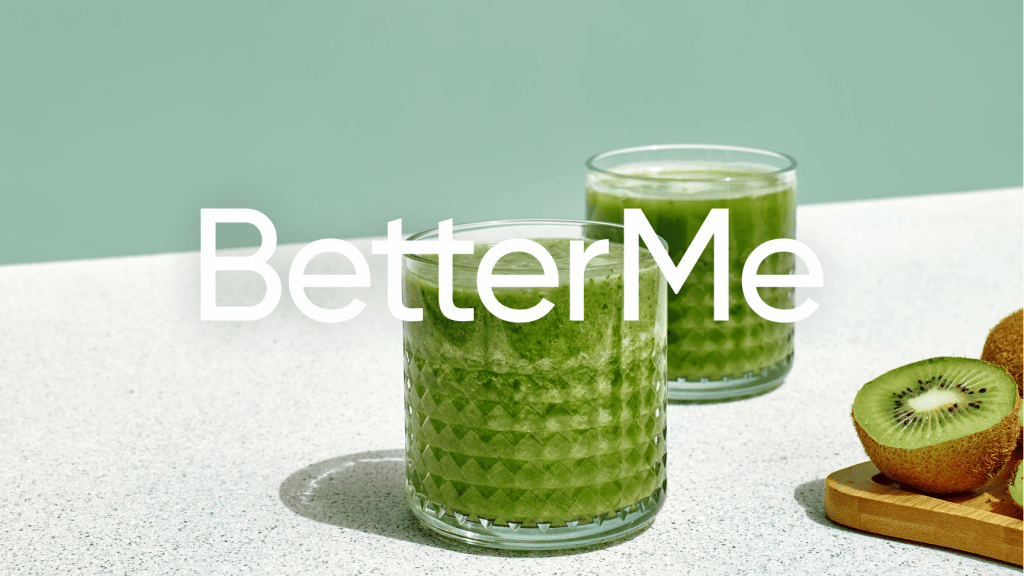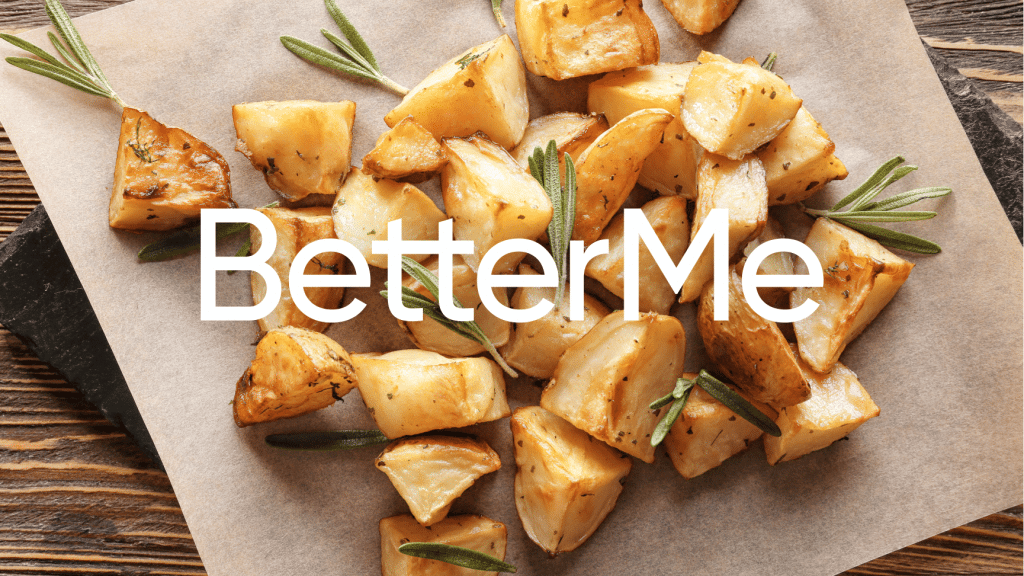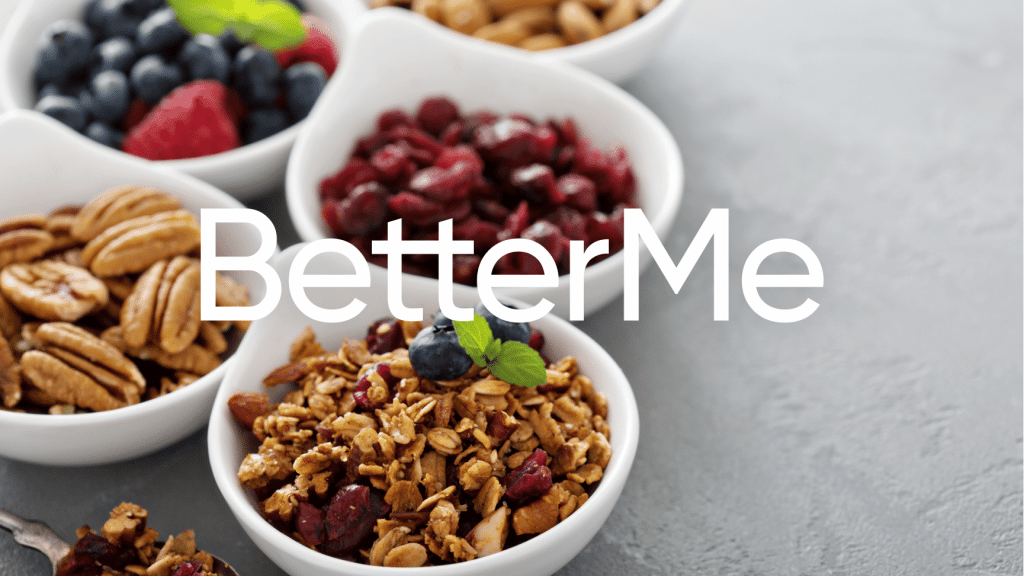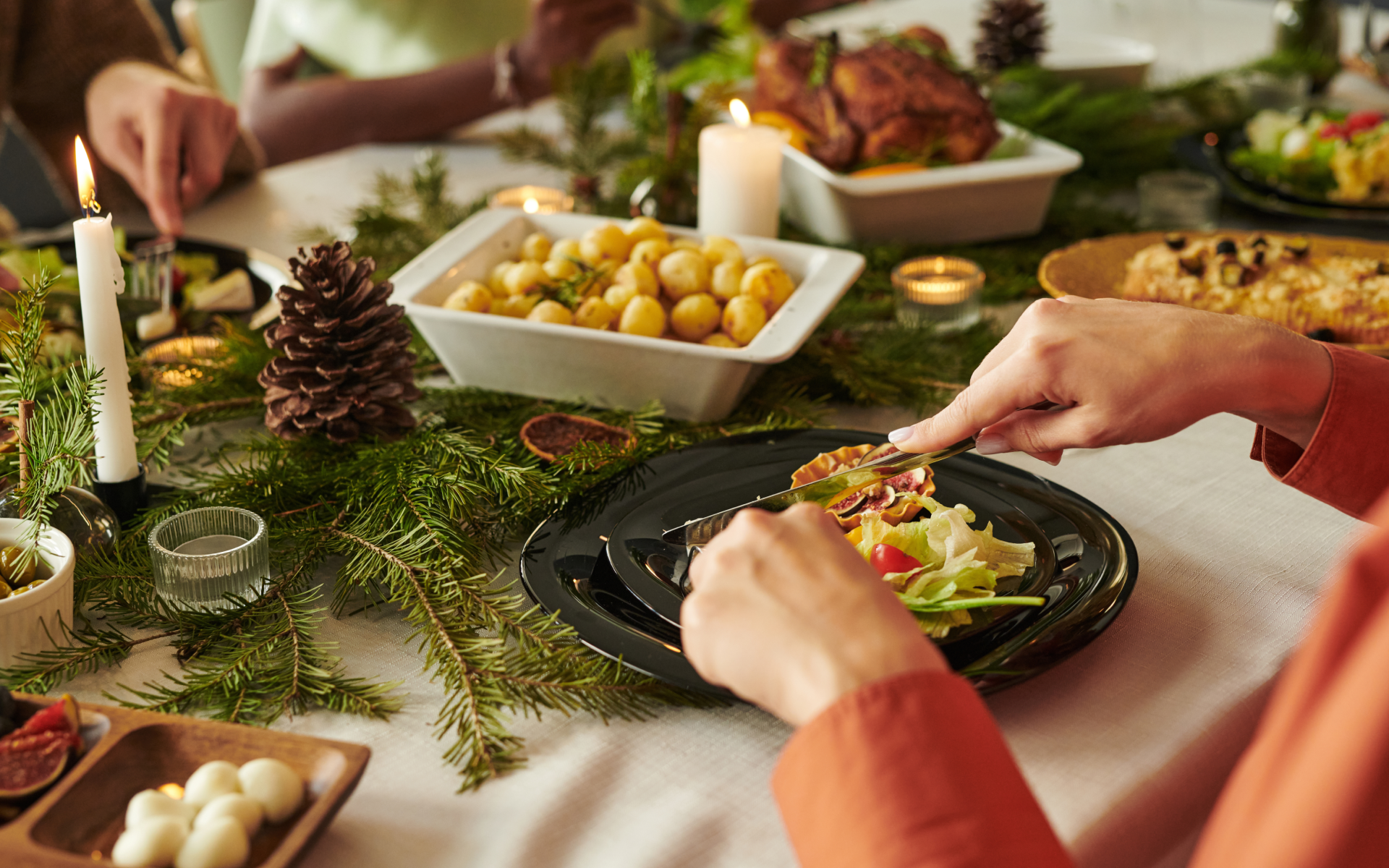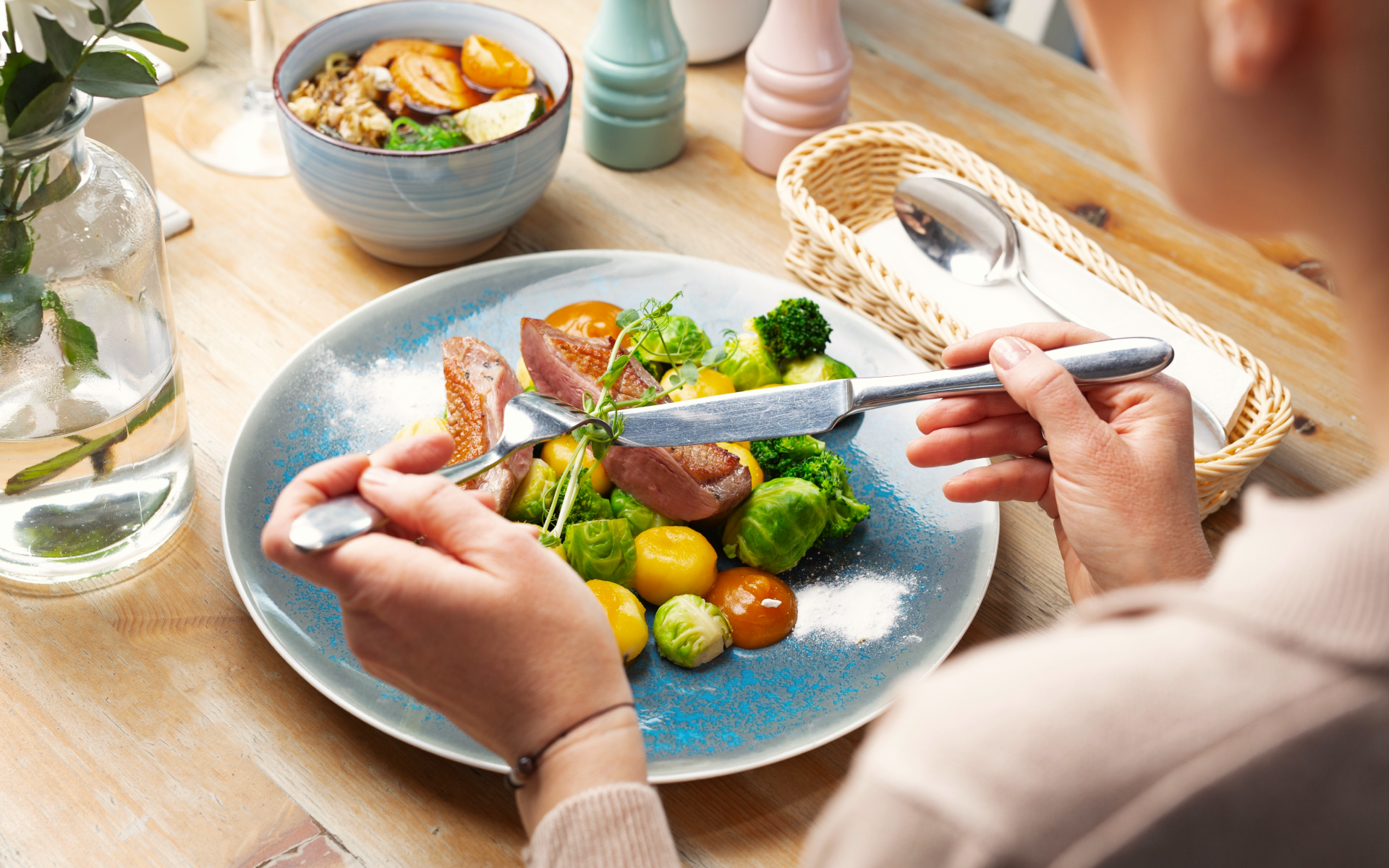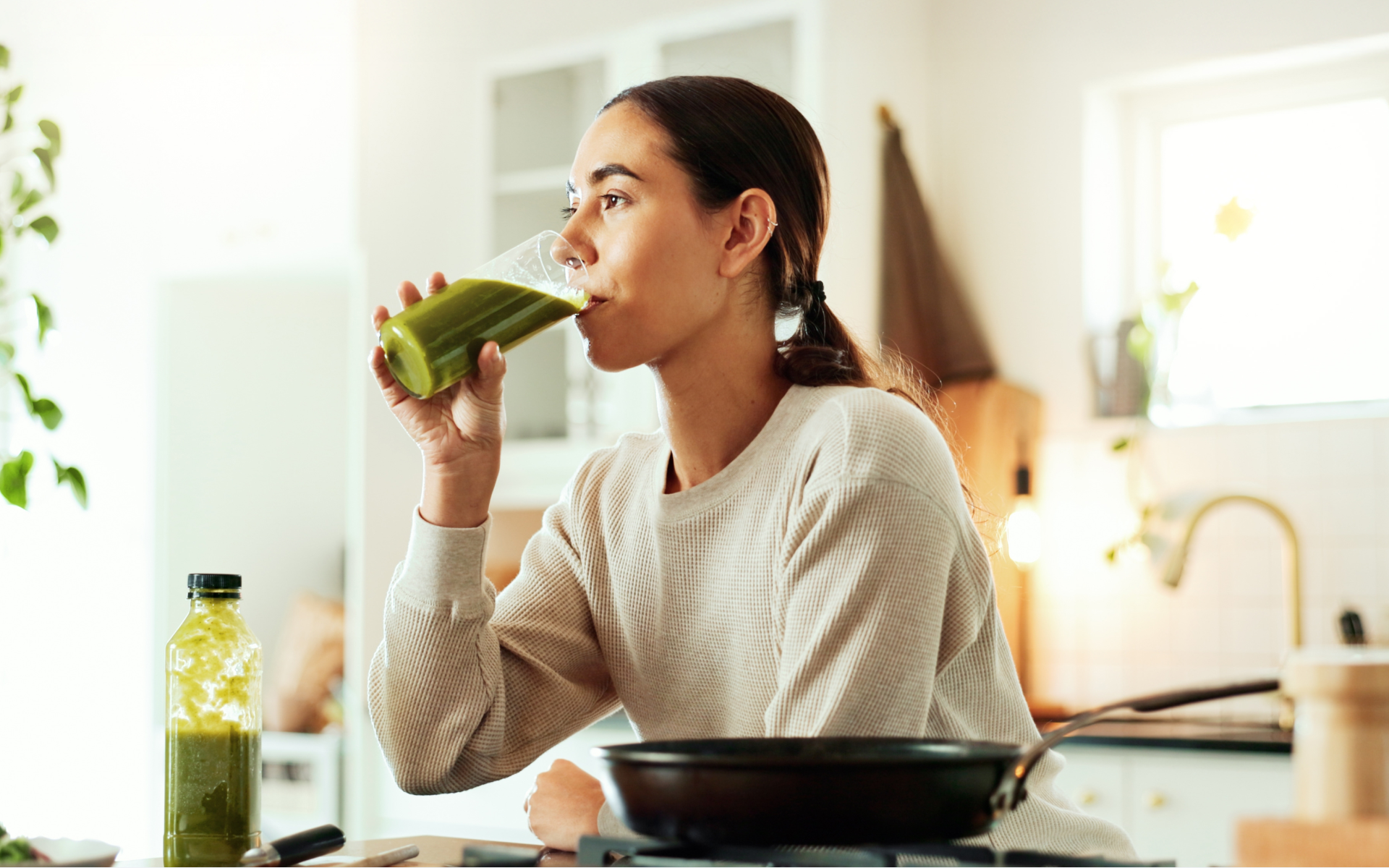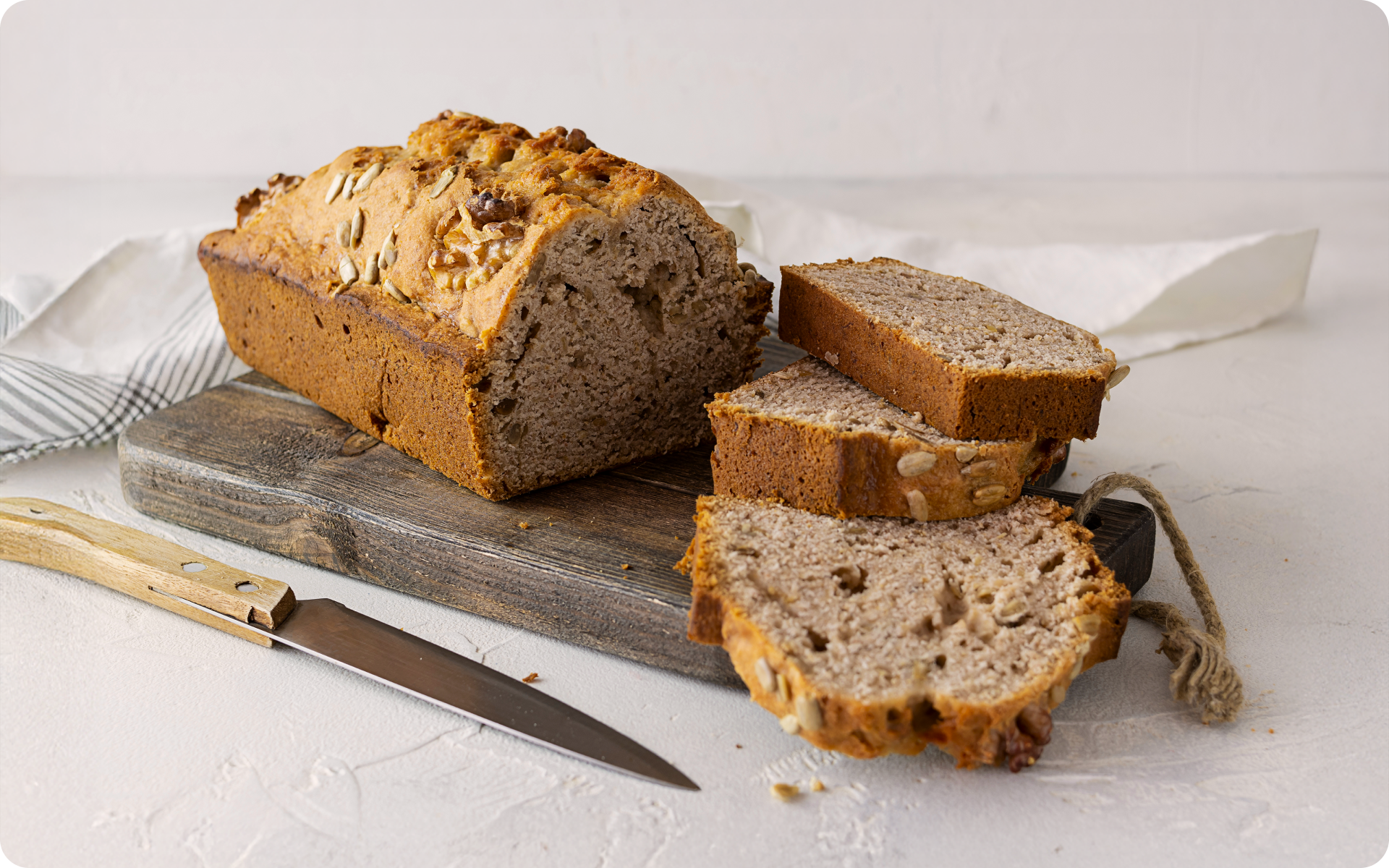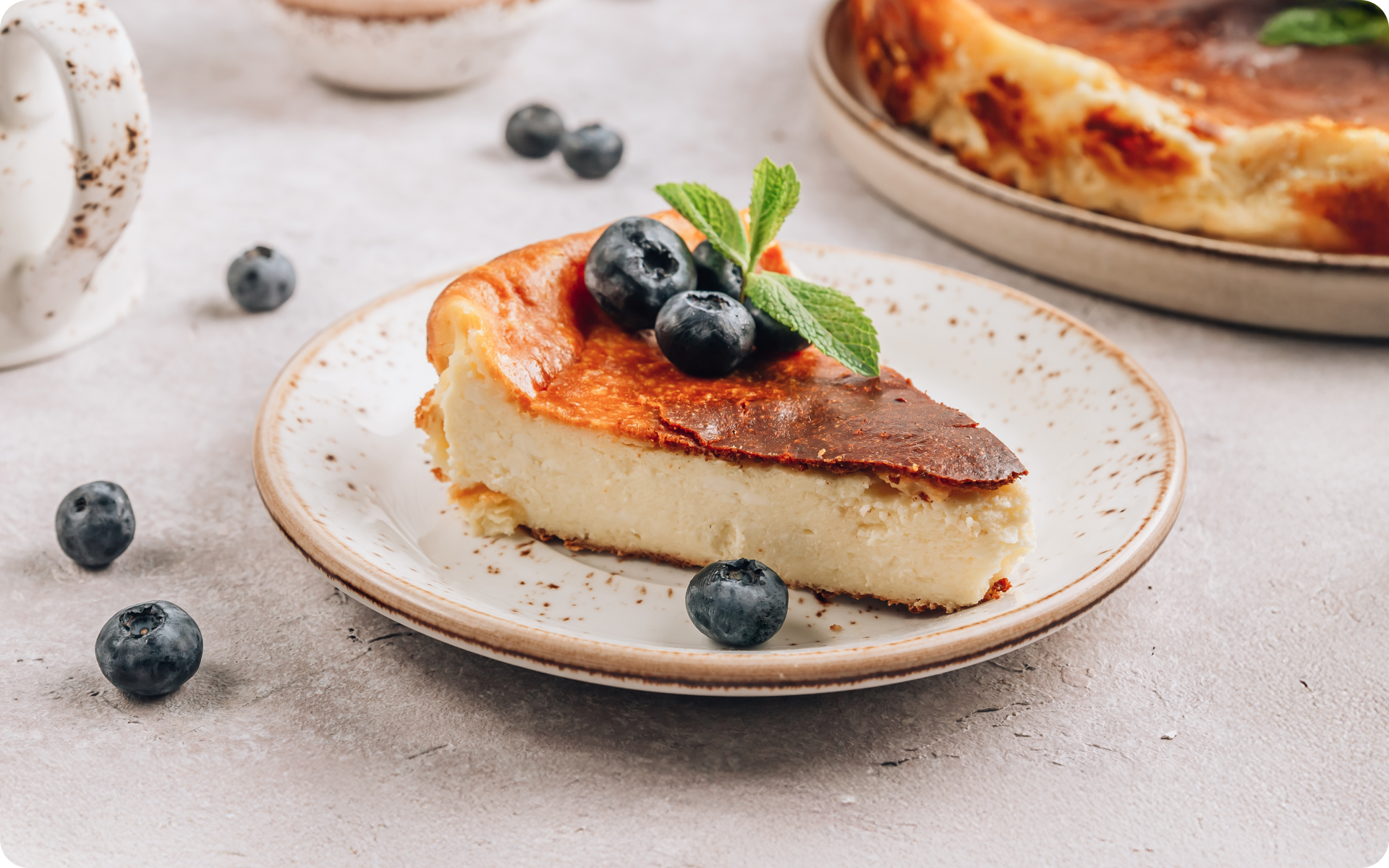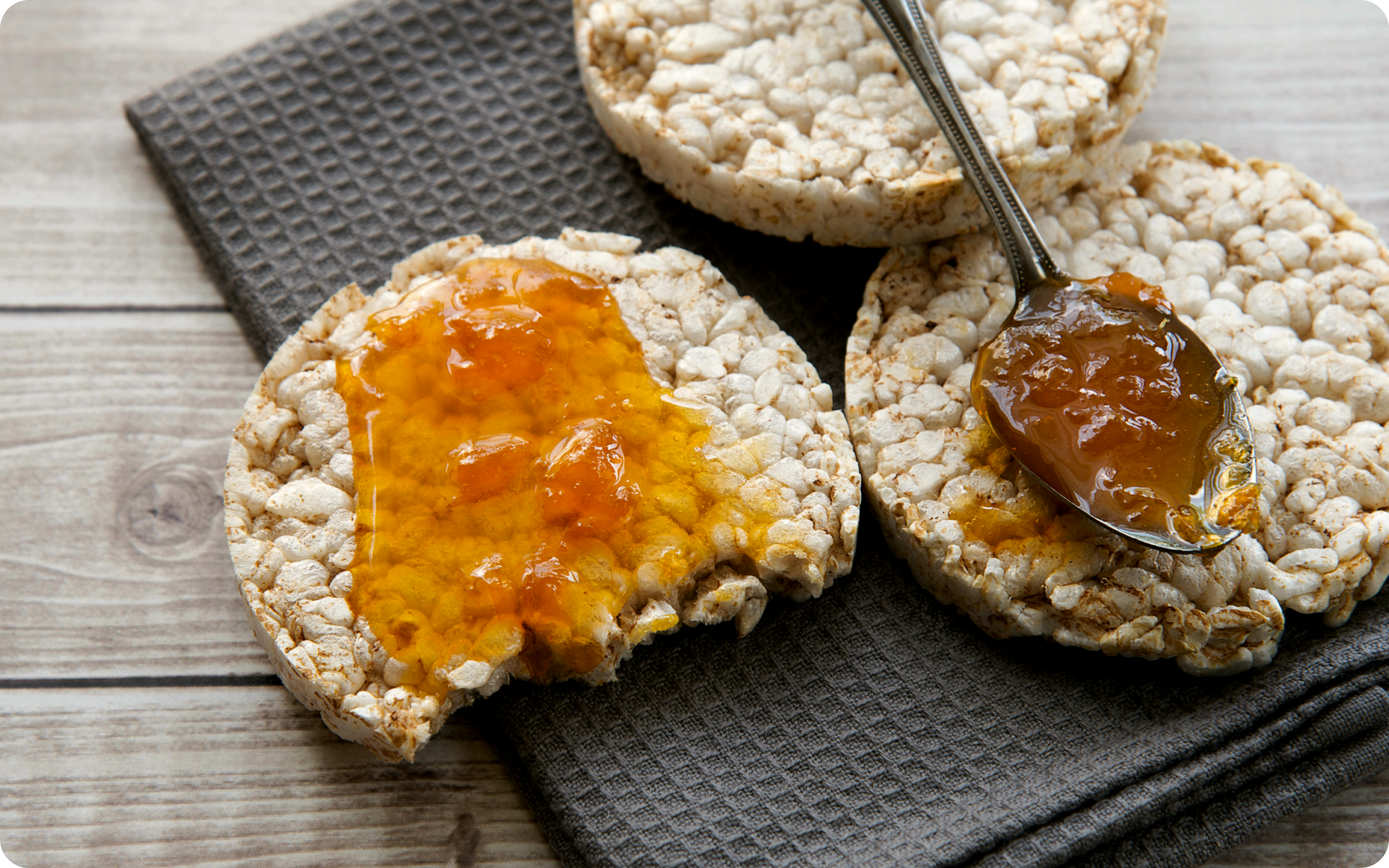Holidays are usually about good food and good company. If you are vegan, you’ll need to be careful to stick to your practice as it is easy to get drawn away by the joy of festivities. Many people tend to think that vegan meals are limited and pretty boring but there are many delicious options to choose from. So, what vegan thanksgiving or vegan christmas recipes could you try? Here are a bunch of delicious, vegan holiday recipes you can choose from.
Get your personalized
meal plan!
Vegan Holiday Recipe Appetizers
For some appetizer extravaganzas are usually the favorite part of the party. Try these quick vegan bites for your holiday gatherings.
Baked Apple Chips (1)
Ingredients:
- 2 tablespoons white sugar
- 1 tablespoon ground cinnamon
- 4 Granny Smith apples, cored and sliced into very thin rounds
Directions:
- Preheat the oven to 250° F. Line two baking trays with parchment paper.
- In a bowl, whisk sugar and cinnamon together. Add the apple slices and toss to coat.
- Arrange the slices on the baking sheets.
- Bake until browned and crisp, for about 2 hours. Cool then serve.
Servings: 8
Nutritional info: 45 calories, 12g carbs, 2g fiber, 10g sugar, 1mg sodium
Read More: 6 Vegan Holiday Cookies That Scream Sugar, Spice, And Everything Nice
Keto Zucchini Chips (5)
Ingredients:
- 1 tablespoon grated lime zest
- 2 teaspoons lime juice
- 2 teaspoons smoked paprika
- 1 teaspoon kosher salt
- ½ teaspoon ground black pepper
- 2 large zucchinis, thinly sliced
- Cooking spray
Directions:
- Preheat the oven to 225°. Line a baking tray with parchment paper.
- In a bowl, combine the zest, lime juice, paprika, salt, and black pepper.
- Spread the zucchini slices in a single layer on the prepared baking tray.
- Bake for 45 to 60 minutes, until golden brown and crispy.
Servings: 6
Nutritional info: 21 calories, 4g carbs, 2g protein, 2g fiber, 2g sugar, 332mg sodium
Pico de Gallo (7)
Ingredients:
- 6 plum tomatoes, diced
- ½ red onion, minced
- 3 tablespoons chopped fresh cilantro
- ½ jalapeño pepper, seeded and minced
- ½ lime, juiced
- 1 clove garlic, minced
- 1 pinch of garlic powder
- 1 pinch of ground cumin
- Salt and ground black pepper
Directions:
- In a bowl, combine the tomatoes, onion, cilantro, jalapeño pepper, garlic powder, garlic, lime juice, cumin, salt, and pepper.
Servings: 3
Nutritional info: 10 calories, 2g carbs, 1g fiber, 1g sugar, 15mg sodium
If you’ve mustered up the courage to crush your weight loss goal, let Betterme take the sting out of this demanding process. Our app will help you restructure your habits, remold your life and crank up your fitness results!
Roasted Chickpeas (8)
Ingredients:
- 1 (15-ounce) can of chickpeas, drained
- 2 tablespoons olive oil
- 1 pinch of garlic salt
- 1 pinch of cayenne pepper
- 1 pinch of salt
Directions:
- Preheat your oven to 450 degrees F.
- Pat the chickpeas with a paper towel to dry them.
- In a bowl, place the chickpeas and olive oil. Toss to combine. Season with salt, garlic salt, and cayenne, and toss again.
- Spread the chickpeas on a rimmed baking tray.
- Roast in the oven for 30 to 40 minutes, until browned and crunchy; be cautious to avoid burning them.
Servings: 4
Nutritional info: 161 calories, 19g carbs, 4g protein, 8g fat, 4g fiber, 337mg sodium
Vegan Holiday Recipes For Dinner
What would you prepare for an all vegan Christmas dinner? There are many options to choose from – a mushroom dish, roasted vegetables, baked potatoes and much more.
Below are a few vegan holiday party recipes:
Pumpkin Black Bean Soup (2)
Ingredients:
- 2 tablespoons olive oil
- 2 red bell peppers, chopped
- 1 cup chopped sweet onion
- 2 cloves of garlic, minced
- 1, 15 oz. can pumpkin puree
- 1, 15 oz. can black beans, rinsed and drained
- 1, 13.5 oz. can of full-fat coconut milk
- 2 cups vegetable broth
- 1″ piece of fresh ginger, minced
- 1 teaspoon ground cardamom
- Sriracha sauce – optional
- Toasted pumpkin seeds – optional
Directions:
- In a large skillet, heat oil over medium-high heat. Saute the onions, peppers, and garlic until the onions turn translucent.
- Add in all the other ingredients except the sriracha sauce and pumpkin seeds. Bring to a boil then reduce heat. Cover the skillet and simmer for 15 minutes.
- Puree the soup with an immersion blender or let it cool then blend in batches in the regular blender or food processor.
- Serve! Top with the sriracha sauce and toasted pumpkin seeds if desired.
Servings: 8
Nutritional info: 218 calories, 19g carbs, 6g protein, 15g fat, 6g fiber, 3g sugar, 335mg sodium
Read More: Stuffed Zucchini Boats Vegan – Treat Your Beloved Ones With Nutritious Appetizers
Maple Balsamic Glazed Brussels Sprouts (3)
Ingredients:
- 1 lb. Brussels sprouts, cleaned and halved
- 2 tbsp. extra-virgin olive oil
- ½ cup balsamic vinegar
- 2 tbsp. Maple syrup
- 1 tbsp. Dijon mustard
- 2 cloves garlic, minced
- Kosher salt
- Freshly ground black pepper
Directions:
- In a large skillet, heat oil over medium heat. Add the brussel sprouts, cut side down. Cook undisturbed until golden brown, for 3 to 4 minutes.
- Add in ¼ cup of water and cover. Let the sprouts steam for about 3 minutes. If the skillet seems dry, add a tablespoon of water one at a time.
- Remove sprouts from the skillet and put them aside.
- Add the vinegar, mustard, maple syrup, and garlic then mix to combine. Let it simmer for about 6 to 8, until thick with syrup consistency.
- Return the brussel sprouts to the pan and mix to coat. Heat for another 2 to 3 minutes.
- Season with salt and pepper and serve immediately.
Servings: 4
Nutritional info: 174 calories, 24g carbs, 4g protein, 8g fat, 4g fiber, 16g sugar, 362mg sodium
Roasted Butternut Squash (4)
Ingredients:
- 1 butternut squash, peeled, seeds removed and cubed
- 2 tbsp. extra-virgin olive oil
- Kosher salt
- Freshly ground black pepper
- Pinch red pepper flakes
Directions:
- Preheat the oven to 425°.
- In a large bowl, toss the cubed squash with oil, red pepper flakes, salt, and pepper.
- Spread out the squash on a prepared baking tray and roast for about 40 minutes, until fork tender.
- Serve!
Servings: 4
Nutritional info: 135 calories, 19g carbs, 2g protein, 7g fat, 6g fiber, 4g sugar, 487mg sodium
Vegan Mashed Potatoes (12)
Ingredients:
- 2 pounds russet potatoes
- 8 cloves garlic, peeled and smashed
- 1 sprig of fresh rosemary
- 1 sprig of fresh thyme
- ¼ cup olive oil
- 1 pinch salt and ground black pepper
Directions:
- Place the potatoes, rosemary, thyme, and garlic in a large pot and cover with salted water. Bring to a boil. Cook for about 30 minutes until potatoes are fork-tender. Drain and reserve one cup of the cooking water.
- Transfer the boiled potatoes to a bowl, discard the thyme and rosemary, and add olive oil, salt, and pepper.
- Mash the potatoes while adding the cooking water to the desired consistency.
Servings: 4
Nutritional info: 303 calories, 42g carbs, 5g protein, 14g fat, 5g fiber, 2g sugar, 54mg sodium
Reasons why BetterMe is a safe bet: a wide range of calorie-blasting workouts, finger-licking recipes, 24/7 support, challenges that’ll keep you on your best game, and that just scratches the surface! Start using our app and watch the magic happen.
Vegan Holiday Recipes For Dessert
During the holidays, there’s usually too much planning, shopping, cooking, and setting up to do. Simple, quick-to-make dessert recipes, thus come in handy.
Here are easy dessert and vegan holiday cookies recipes you’ll love:
No Bake Coconut Snowballs (6)
Ingredients:
- 1 and ¼ cups shredded coconut
- ⅓ cup almond flour
- ¼ cup maple or agave syrup
Directions:
- In a food processor, add 1 cup of coconut, almond flour, and maple or agave syrup. Blend until well combined.
- Make 10 balls of almost equal size.
- Roll the balls in the shredded coconut and coat completely.
- Place the coconut snowballs in a container and refrigerate for an hour. This is optional but is advised. The snowballs can be refrigerated in a sealed container for up to one week.
Servings: 10
Nutritional info: 88 calories, 5.5g carbs, 0.7g protein, 6.2g fat, 2g fiber, 4.7g sugar, 1mg sodium
Vegan Apple Cake (9)
Ingredients:
- 150g dairy-free spread, melted, plus extra for the tin
- 300ml oat milk
- 1 tbsp lemon juice
- 350g self-raising flour, plus 1 tbsp to coat the apples
- 100g caster sugar
- 100g light brown soft sugar
- 1 tsp baking powder
- 1 tsp almond extract
- 300g apples, peeled, cored, and chopped into 2cm cubes
- 2 tbsp flaked almonds
Directions:
- Butter a 20 cm- deep cake tin using the dairy-free spread and line it with parchment paper. Heat your oven to 180C/160C fan/gas 4.
- Pour the milk into a jug, add the lemon juice and let it sit for about 5 minutes at room temperature.
- Mix the flour, caster sugar, brown sugar, and baking powder in a large bowl. Pour over the thickened oat milk and lemon mixture and add the butter and salt. Beat everything with an electric whisk.
- Tip the apples into another large bowl, sprinkle the extra flour, and toss. Fold the apples through the batter and spoon the mixture into the cake tin. Sprinkle the almonds.
- Bake in the oven center for 60 to 80 minutes or until golden and firm.
- Let it cool for a few minutes. Serve.
Servings: 8
Nutritional info: 445 calories, 67g carbs, 6g protein, 16g fat, 3g fiber, 1.15g salt
Vegan Banana-Chocolate Chip Cookies (10)
Ingredients:
- 6 cups all-purpose flour
- 2 teaspoons baking soda
- 2 teaspoons salt
- 15 ounces of vegan margarine
- 2 cups white sugar
- 2 cups brown sugar
- 2 medium ripe bananas, mashed
- 3 teaspoons vanilla extract
- 3 cups vegan semisweet chocolate chips
Directions:
- Preheat your oven to 350° F.
- In a bowl, mix the flour, baking soda, and salt.
- In a separate bowl, beat the margarine, white and brown sugar together. Mix in the bananas and vanilla then add the flour mixture and chocolate chips gradually while mixing.
- Drop spoonfuls of dough onto an ungreased cookie sheet, 2 inches apart.
- Bake for about 20 minutes or until golden brown.
Servings: 48
Nutritional info: 231 calories, 34g carbs, 2g protein, 10g fat, 1g fiber, 21g sugar, 222mg sodium
Vegan Brownies (11)
Ingredients:
- 2 cups unbleached all-purpose flour
- 2 cups white sugar
- ¾ cup unsweetened cocoa powder
- 1 teaspoon baking powder
- 1 teaspoon salt
- 1 cup water
- 1 cup vegetable oil
- 1 teaspoon vanilla extract
Directions:
- Preheat your oven to 350° F. Grease a 9×13-inch baking sheet.
- Mix the flour, sugar, cocoa powder, salt, and baking powder in a large bowl. Add in the water, oil, and vanilla extract. Mix until well combined. Spread in the greased baking dish.
- Bake until the top is no longer shiny, for about 25 to 30 minutes.
- Let it cool for about 10 minutes then cut it into 16 squares. Serve.
Servings: 16
Nutritional info: 284 calories, 39g carbs, 2g protein, 14g fat, 2g fiber, 25g sugar, 169mg sodium
Conclusion
Whether you are vegan, are trying plant based meals or are hosting vegan guests, these vegan holiday recipes are a must try. They are simple to make, delicious and perfect for the whole family. We hope you enjoy them.
DISCLAIMER:
This article is intended for general informational purposes only and does not serve to address individual circumstances. It is not a substitute for professional advice or help and should not be relied on for making any kind of decision-making. Any action taken as a direct or indirect result of the information in this article is entirely at your own risk and is your sole responsibility.
BetterMe, its content staff, and its medical advisors accept no responsibility for inaccuracies, errors, misstatements, inconsistencies, or omissions and specifically disclaim any liability, loss or risk, personal, professional or otherwise, which may be incurred as a consequence, directly or indirectly, of the use and/or application of any content.
You should always seek the advice of your physician or other qualified health provider with any questions you may have regarding a medical condition or your specific situation. Never disregard professional medical advice or delay seeking it because of BetterMe content. If you suspect or think you may have a medical emergency, call your doctor.
SOURCES:
- Baked Apple Chips (2022, allrecipes.com)
- Creamy pumpkin black bean soup (2022, glueandglitter.com)
- Honey Balsamic Glazed Brussels Sprouts (2022, delish.com)
- How To Roast Butternut Squash (2021, delish.com)
- Keto Zucchini Chips( 2017, allrecipes.com)
- No Bake Coconut Snowballs (3 Ingredients!) (2017, simpleveganblog.com)
- Pico de Gallo Recipe (2022, allrecipes.com)
- Roasted Chickpeas Recipe (2022, allrecipes.com)
- Vegan apple cake (n.d., bbcgoodfoodme.com)
- Vegan Banana-Chocolate Chip Cookies Recipe (2022, allrecipes.com)
- Vegan Brownies Recipe (2022, allrecipes.com)
- Vegan Mashed Potatoes Recipe (2022, allrecipes.com)
